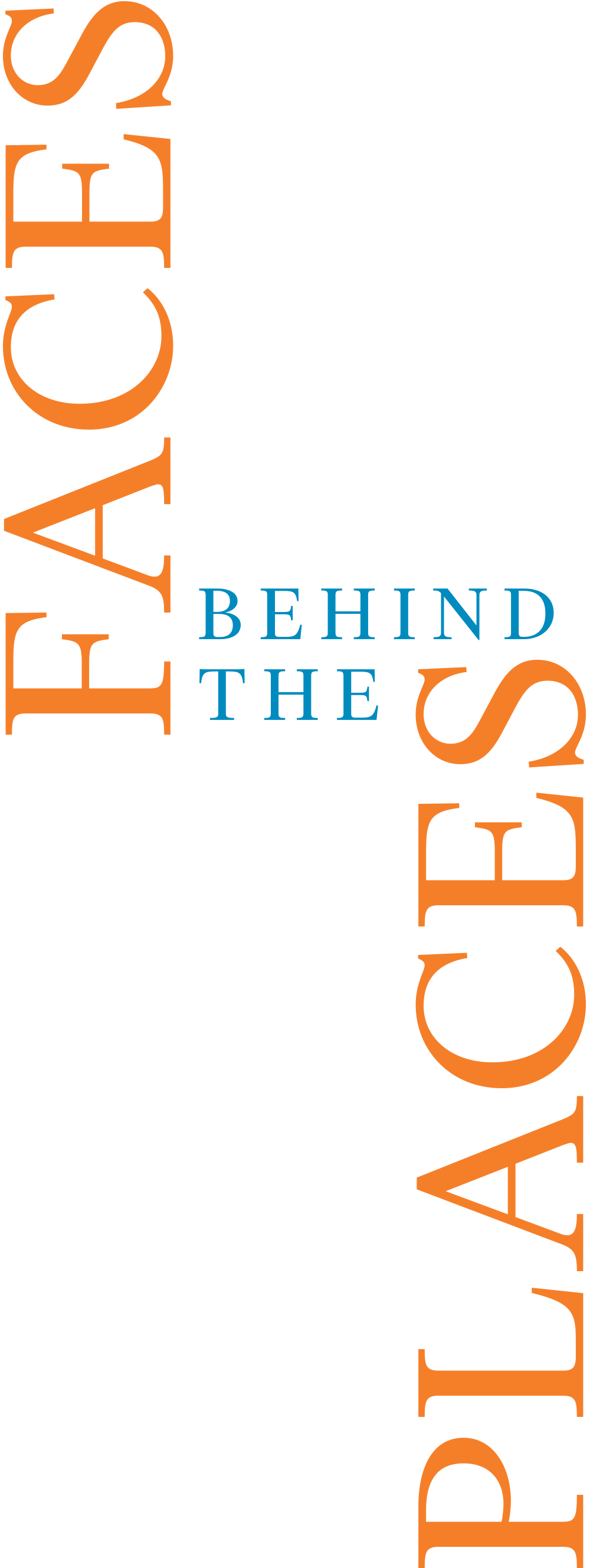
Illlustrations by Jane Brooks

Illlustrations by Jane Brooks

Generations of Bucknellians are on a last-name basis with these and dozens of other buildings and locations on campus. The names conjure an instant image, but it’s usually one of brick, steel or concrete — not of the person whose name is immortalized there.
People like Robert L. Rooke, Class of 1913, who worked for Merrill Lynch after graduation, advanced quickly and oversaw the firm’s trading during the stock market crash of 1929. His family’s many gifts to Bucknell helped build Rooke Chapel, the Freas-Rooke Pool and the Rooke Science Center. At his death in 1994, Rooke was believed to be the oldest member of the New York Stock Exchange, having held a seat there for 66 years.
The stories only begin there. The University’s rich history reveals fascinating details about the remarkable women and men whose professional, personal and financial contributions helped Bucknell grow and thrive.
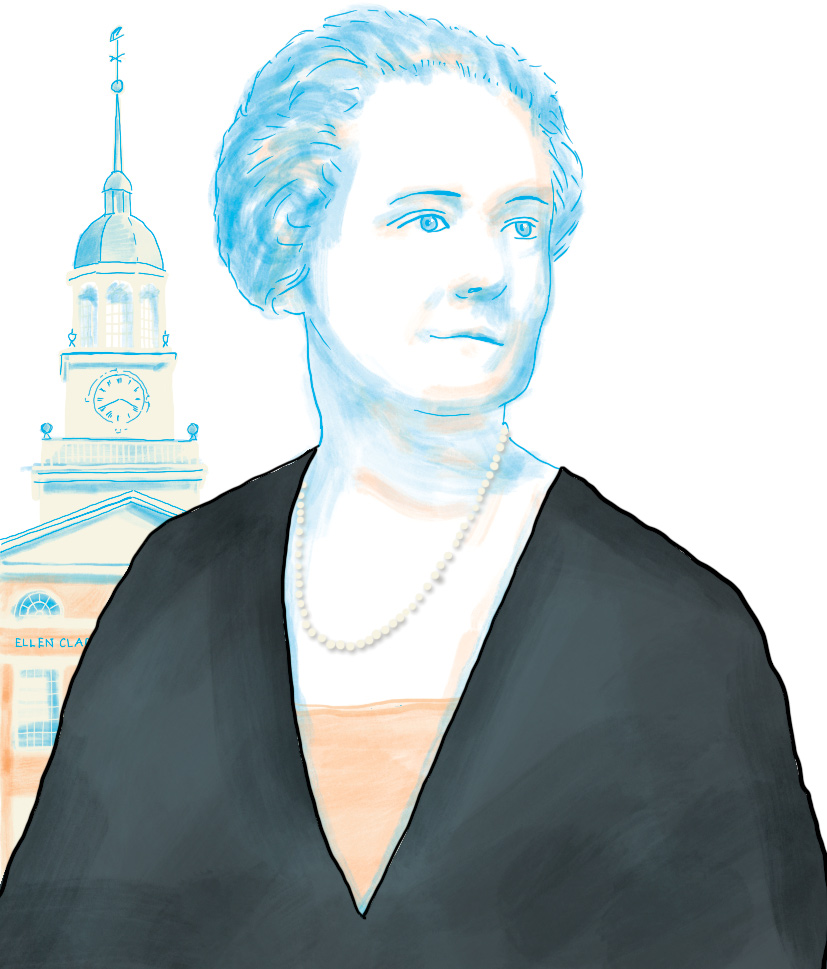

Born in 1892 and the heir to a silver fortune, Ellen Clarke married Herbert Bertrand in 1929. The couple raised and trained dachshunds in Greenwich, Conn., combining their first names to create Ellenbert Farm Kennels.
“Ellenbert has dedicated itself to breeding only the finest dachshunds,” one magazine ad for their operation read. “Our winning record in the show ring is unparalleled.”
That was no exaggeration. They dominated the show circuit, winning events staged by outfits such as the Westminster Kennel Club and the Dachshund Club of America. One of their most successful pups had the fitting name of Earthstopper.
Herbert and Ellen took frequent trips across the Atlantic Ocean aboard luxury liners to hand-pick the finest dachshunds from Berlin. These lavish voyages, covered in newspaper society pages, further boosted the reputation of the Ellenbert operation.
The couple made a final trip to Germany in 1940 — just as the outbreak of World War II would have rendered future trips unwise. Back in the U.S., Herbert received a proposition from one of his closest friends, Joseph Dent, Class of 1920.
Dent (as in Dent Drive) asked Herbert to join Bucknell’s Board of Trustees.
“He took the matter under favorable consideration,” wrote Arnaud Marts, Bucknell’s president. “But before our arrangements were completed, Mr. Bertrand was taken ill and died suddenly.”
Ellen never forgot the kind offer and later became a trustee herself in 1950. That year, when she learned that Bucknell’s library was outgrowing its space in the Carnegie Building, she stepped up with $200,000 — the first of many gifts to fund the construction of the Ellen Clarke Bertrand Library, which opened in 1951, and its main reading room, the Herbert Bertrand Room.
Bucknell librarian Harold W. Hayden’s words proved prescient: “It is impossible to overestimate the importance to the University of this new library building.”
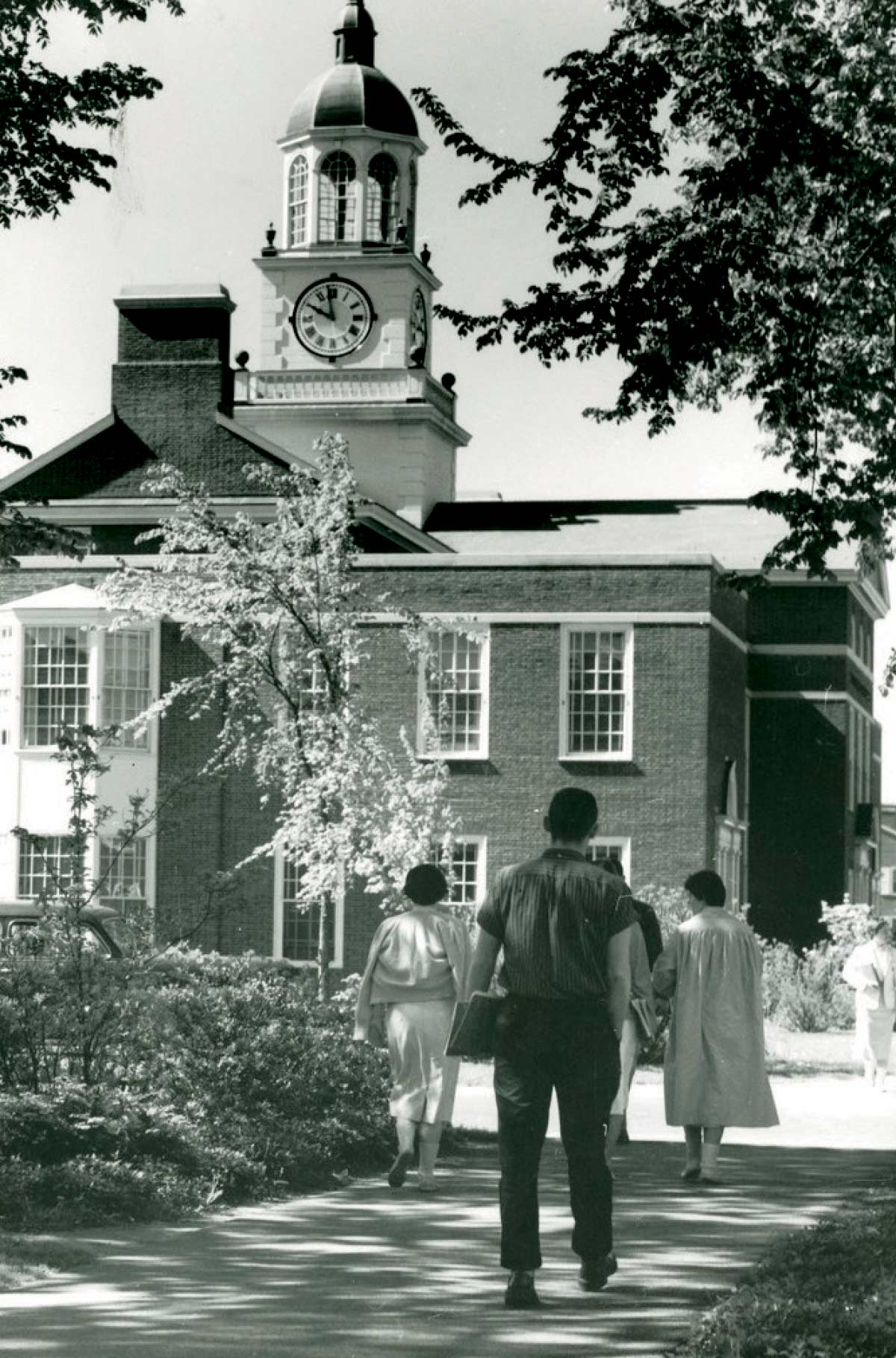
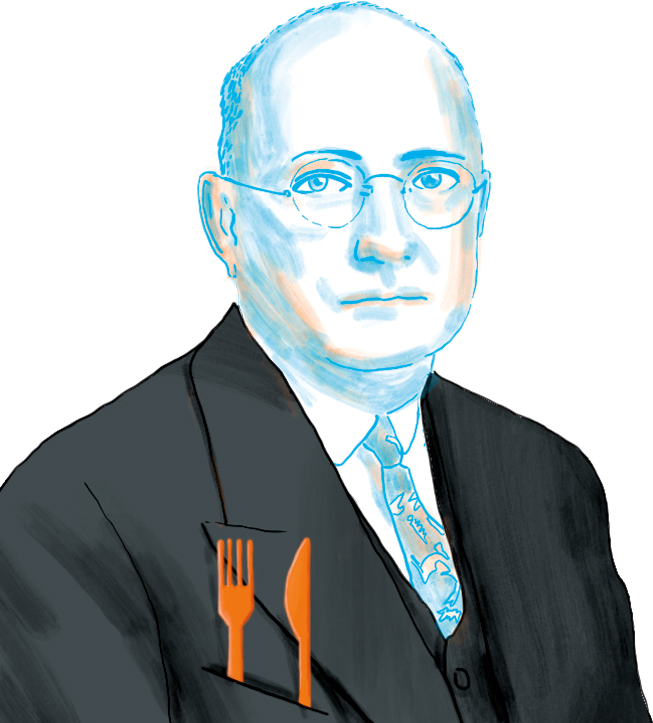

Bostwick adored all things orange and blue. As a student, he was socially active and academically gifted. Bostwick was a member of Kappa Sigma fraternity and editor of both Bucknell’s yearbook (L’Agenda) and its newspaper (then called The Orange and Blue).
He graduated at the head of his class, summa cum laude, and attended law school at the University of Pittsburgh before starting a law career.
He later formed his own law firm, Thorp, Bostwick & Stewart, which occupied a space in the historic Union Arcade building in downtown Pittsburgh.
“His integrity and powers of concentration quickly carried him to a position of leadership in the law,” read a memorial written by Bucknell’s Board of Trustees after Bostwick’s death in 1947. “Not only was Roy Bostwick one of the ablest lawyers of his time, but he was also a public- spirited citizen.”
That service included a role directing blood donations for the Red Cross during World War II. After the war, he turned his attention back to Bucknell, where he helped plan the University’s centennial celebration in 1946.
“Although Bucknell never can repay him for these services,” Bostwick’s memorial reads, “he was rewarded by the knowledge that he was making a definite contribution to the lives of the young men and women for whose welfare he conscientiously labored.”
More than 70 years after Bostwick’s death, his name and legacy endure. The Roy Grier Bostwick Memorial Dining Room, on the first floor of the Elaine Langone Center, opened in 1971. These days, students breeze into the University’s main dining hall three times a day for French toast, Buffalo chicken mac and cheese, made-to-order stir fry or whatever they crave to nourish body and mind.

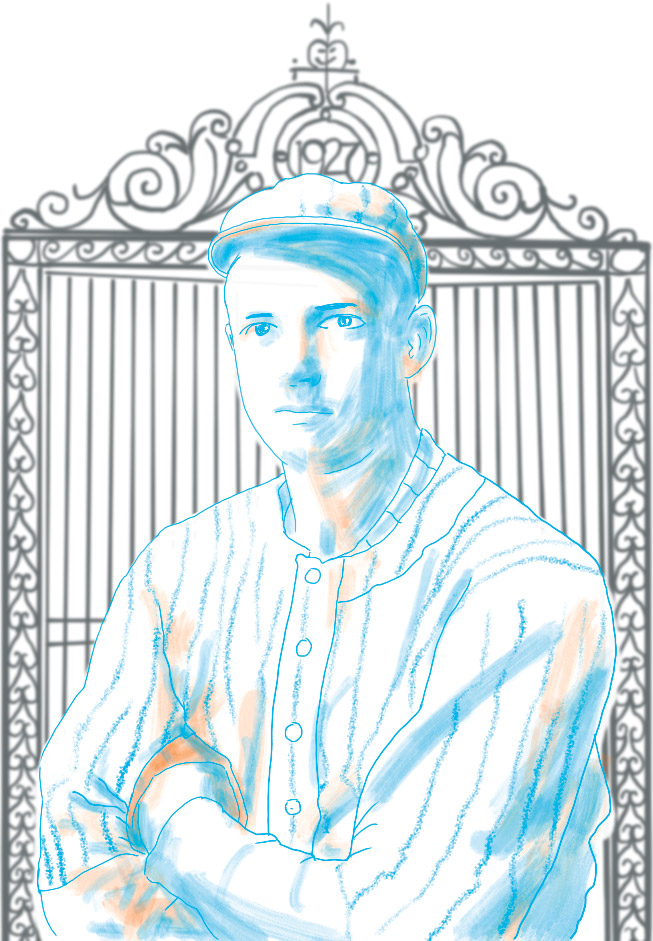

What’s surprising is that those words, found on the west side of the Christy Mathewson Gates, still hold true nearly a century later.
Mathewson did a bit of everything in his three years at Bucknell. He was the historian of his first-year class, sang in the glee club and was a member of Phi Gamma Delta fraternity.
His athletic skills were unmatched — as a 6-foot-1 basketball center, as a football fullback and especially as a baseball pitcher. His famous “fadeaway” pitch, one of the rarest thrown in baseball, moved in the opposite direction of a curveball, befuddling batters.
In 1901, “Matty” left Bucknell to pursue a professional career with baseball’s New York Giants. Records crumbled and batters withered during his 16-year career. But the highlight was Mathewson’s performance in the 1905 World Series against the Philadelphia Athletics.
Over the span of six days, Mathewson pitched three complete-game shutouts, helping the Giants win the Series four games to one.
“It was wonderful to watch him pitch,” Philadelphia manager Connie Mack said after the Series. “When he wasn’t pitching against you.”
Mathewson enlisted in the Army during World War I but was accidentally gassed during a training exercise in France and sent home with infected lungs, later diagnosed as tuberculosis. He died on Oct. 7, 1925, at age 45.
Shocked and saddened, the nation looked for a way to recognize Mathewson’s contributions. Bucknell was the clear choice for a memorial because “it was here that he first gained fame as an athlete and baseball pitcher,” the dedication program read.
Funds for the Christy Mathewson–Memorial Gateway were contributed by every Major League baseball team, hundreds of smaller ball clubs and thousands of regular fans.
At the dedication in 1928, leaders from Bucknell and officials from pro baseball gathered to honor the “athlete, soldier and gentleman.” Also in attendance were Mathewson’s wife, Jane, and their son, Christy Mathewson Jr. ’27, a Bucknell junior at the time of his father’s death.
In his remarks, Kenesaw Mountain Landis, baseball’s first commissioner, said that Mathewson’s name will never be forgotten.
“Whenever athletics are talked about, Mathewson’s name will be associated with them,” he said. “He was a man possessed with skill, fidelity, devotion and intelligence.”
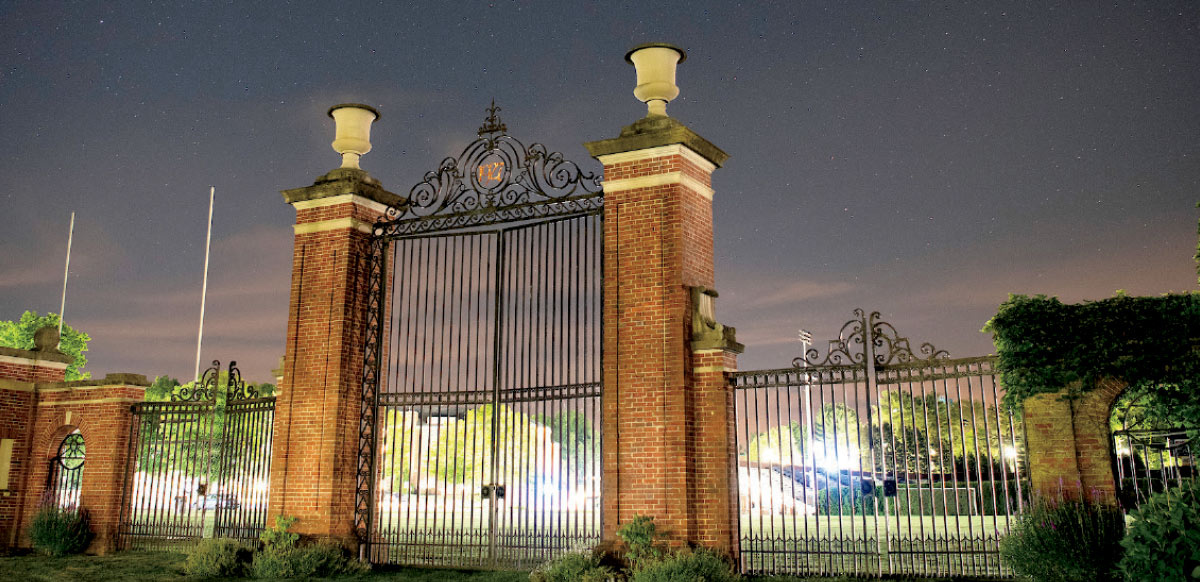
Photo: Emily Paine
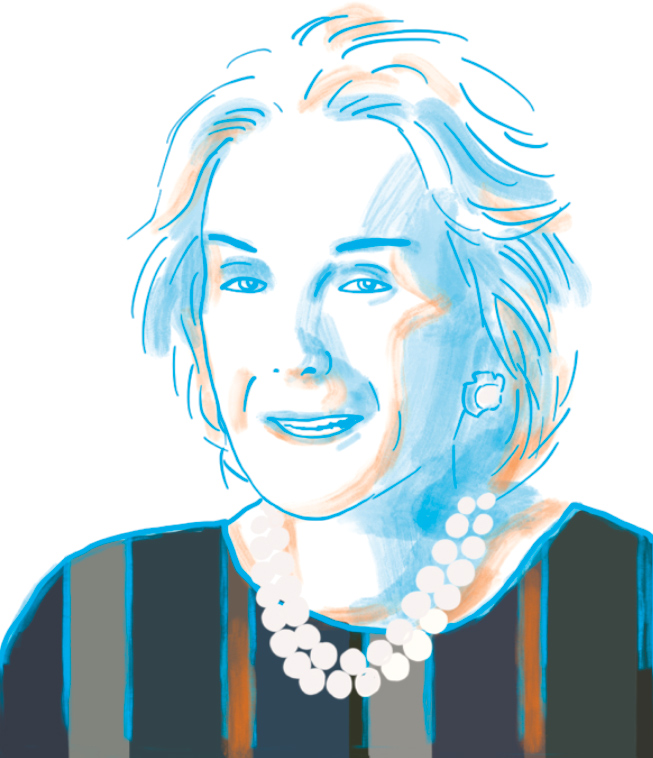

It was June 1954, and the son of a union plumber and school cafeteria worker, who would later help found the Home Depot, was home from Bucknell to spend the summer on Long Island.
Langone met Elaine Abbe on his first day of break.
“Four days later, on our first date, I told Elaine I wanted to marry her,” he says. “And that changed everything in my life, all for the better.”
Ken and Elaine Langone tied the knot on Sept. 15, 1956, just as Ken was beginning his senior year. They lived at 800 Market St. in Lewisburg as Ken finished his degree.
Ken and Elaine raised three sons: Kenneth Jr. ’83, Bruce and Stephen. Elaine, whom a friend calls “a great competitor, sportswoman and lady,” did a little bit of everything — in addition to her full-time job raising three children. She played golf, stayed active in her community and volunteered at the North Shore University Hospital on Long Island.
As Ken’s career in business skyrocketed, Elaine was by his side.
“She’s been with me every step of the way,” Ken said in 2007. “Whatever crazy ideas I came home with, she always encouraged me.”
Ken’s affection went beyond speeches. In 1990, Ken wanted to rename the University Center, the most heavily trafficked building on campus, in honor of his wife. The trick was keeping the secret from Elaine during four months of planning.
On the day of the unveiling, dozens of guests — some arriving from as far away as New Mexico and California — gathered as the unsuspecting Elaine ate lunch in the second-floor Terrace Room.
“I think it would be fair to say that never have so many Learjets and helicopters descended upon Bucknell,” President Gary Sojka said to the guests.
Elaine joined the proceedings, still unsure what was happening until the covers were removed from a portrait and plaque bearing her likeness.
“Bucknell University has been a part of our family,” Elaine said. She called the May surprise the “the ultimate Mother’s Day gift.”
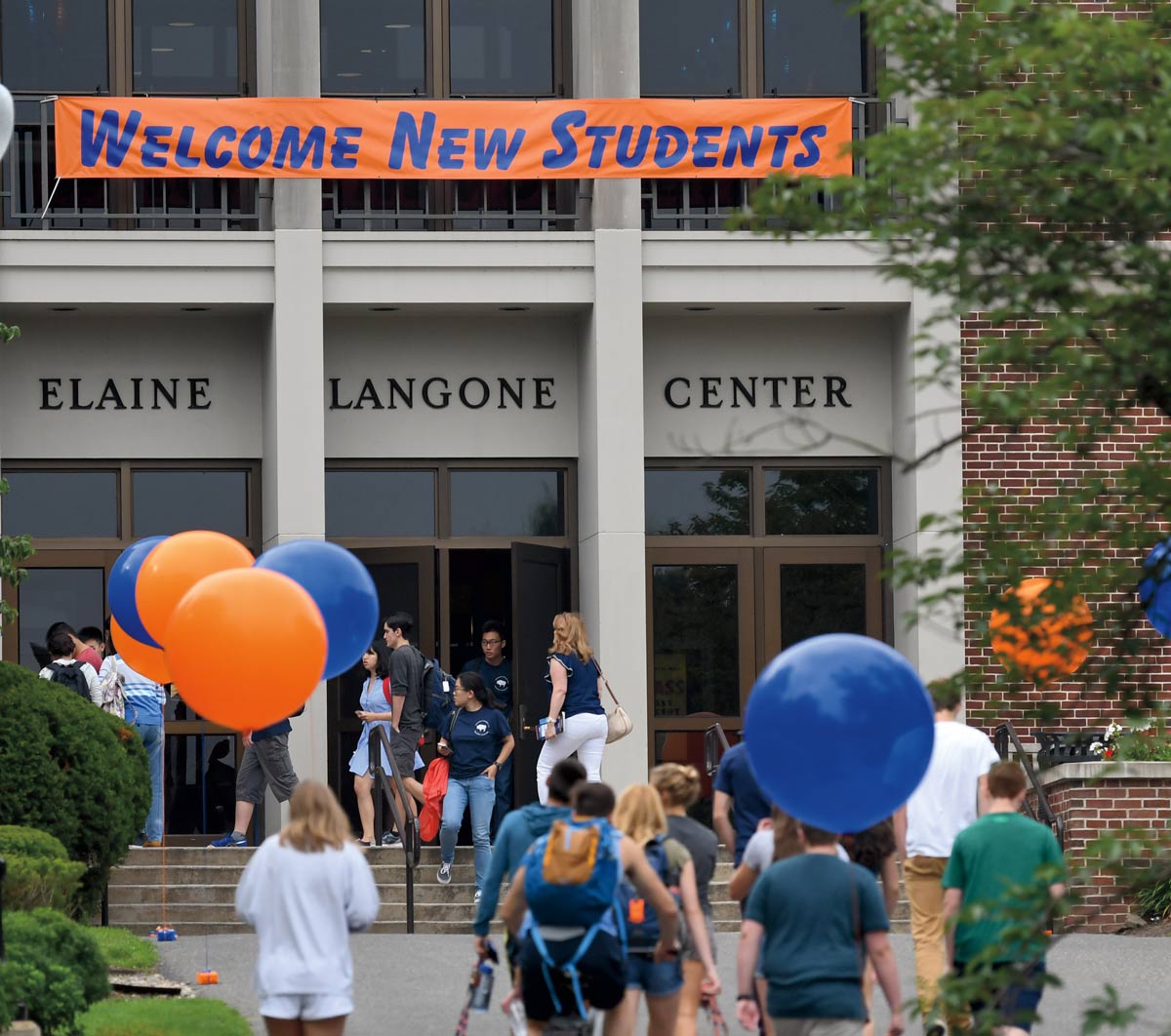
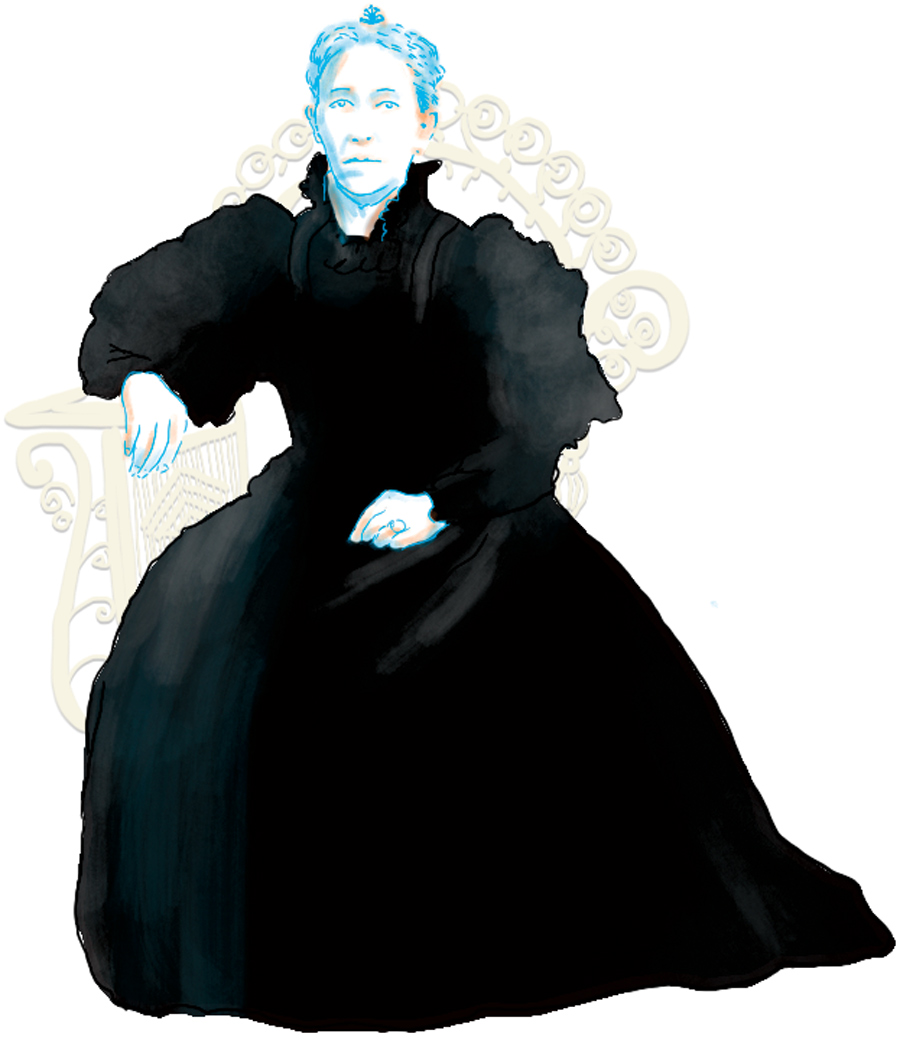

Larison, one of the first women to whom Bucknell gave an honorary degree, served as principal of the University’s Female Institute longer than anyone else and was “a big-hearted teacher who did so much to help struggling girls toward an education,” The Bucknellian reported.
But foremost, Larison was a gifted teacher. Born Katherine Bloomfield Brown, she was the oldest of three farm girls from Cochecton Center, N.Y., 80 miles west of Poughkeepsie.
Larison started her teaching career at 15. At 20, she moved to Georgia to study and teach. Nearly 1,000 miles from home, Larison was settling into her new life when she heard news of the first major land battle of the Civil War, won by the Confederates.
“When the young teacher from the North heard the result of the Battle of Bull Run,” The Bucknellian wrote, “she decided it would be wise for her to get away from the South.”
She moved back to New York to teach and eventually saved up enough money to enroll in the Female Institute in Lewisburg. She graduated at the head of her class in 1867 and was invited to stay on as an instructor.
It was in Lewisburg that she met Andrew B. Larison, Class of 1869. They married and moved to New Jersey, where he became a Baptist pastor.
Andrew Larison died in 1872. The cause was tuberculosis, attributed to an act of Civil War heroism during which he carried wounded soldiers out of a chilly swamp to safety.
After her husband’s death, Larison returned to the Female Institute as its principal. She led the school for 15 years, and “in that time she won the affectionate regard of scores of students who were under her care,” according to The Bucknellian.
Larison died in 1926 and willed her entire estate — $30,025 — to Bucknell. The Female Institute was renamed Larison Hall a year later and today serves as a residence hall for sophomores.
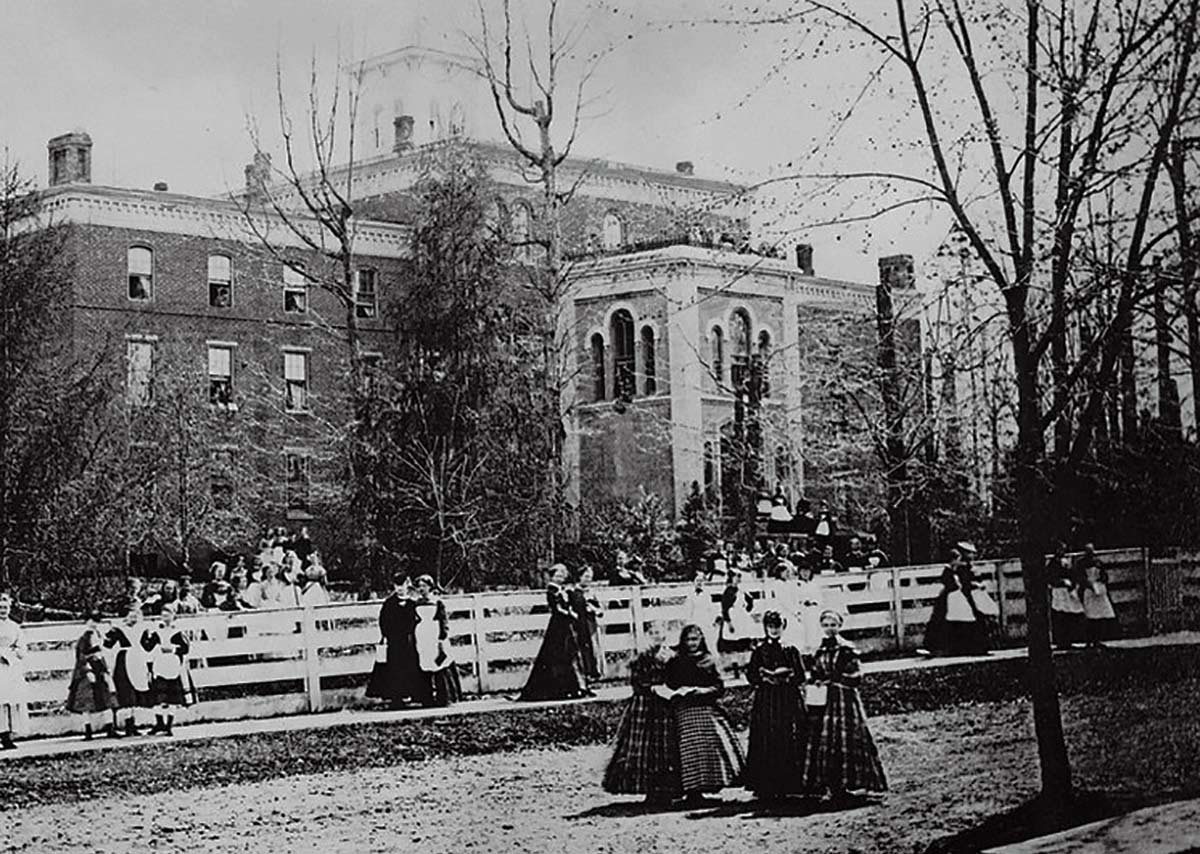
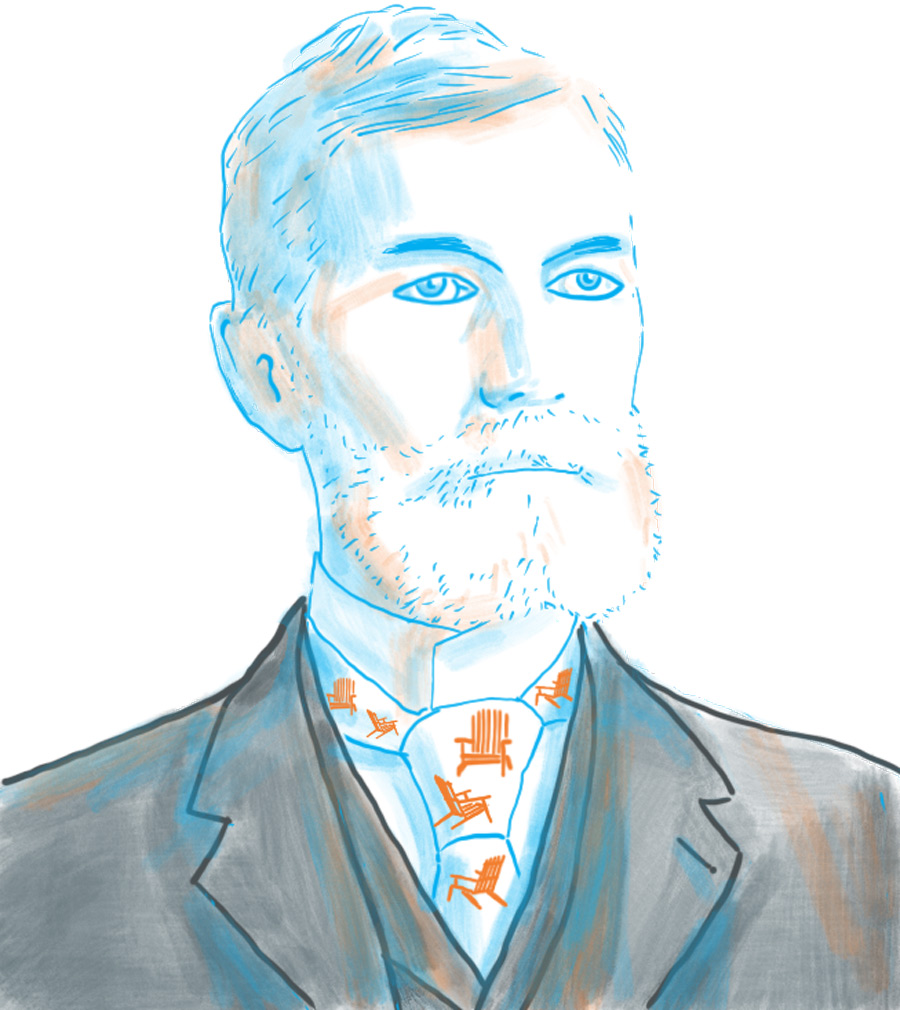

The two were inseparable — in times both prosperous and perilous.
During the Civil War in 1862, Swartz responded to Pennsylvania Gov. Andrew Gregg Curtin’s call to protect the state from Confederate invasion. Swartz recalled riding all night atop a train from Harrisburg to Chambersburg to join the fight. Riding on that same train car was his old friend, Rowland, who had enlisted as a chaplain.
Swartz started visiting Rowland at Bucknell in the early 1860s, developing an affection for Lewisburg and the University. He was elected a trustee in 1884 and served in that role until his death in 1931.
In 1923, Swartz, whose career was in lake and rail transportation, gave Bucknell 594 acres of land on the Virginia side of the Potomac. Learning of the gift, a fellow trustee asked how much Bucknell should expect to get for the land.
“I paid $30,000 for it so many years ago that I don’t remember when it was,” Swartz replied. “If you are ever offered $100,000 for it, accept the offer and ask no questions.”
Bucknell did indeed receive $100,000 but only had to part with 260 acres — a swampy strip sold to a sand and gravel company.
Money from the sale, which came during the heart of the Great Depression, “was like a gift from heaven,”
J. Orin Oliphant wrote in The Rise of Bucknell University.
As for the rest, Bucknell held onto it until 1955, when it was sold for more than $1 million.
James S. Swartz Hall opened in October of that year, designed to house 222 first-year men. The dedication ceremony included speakers, a luncheon and an invitation to watch the Bison football team beat Temple, 38-0.
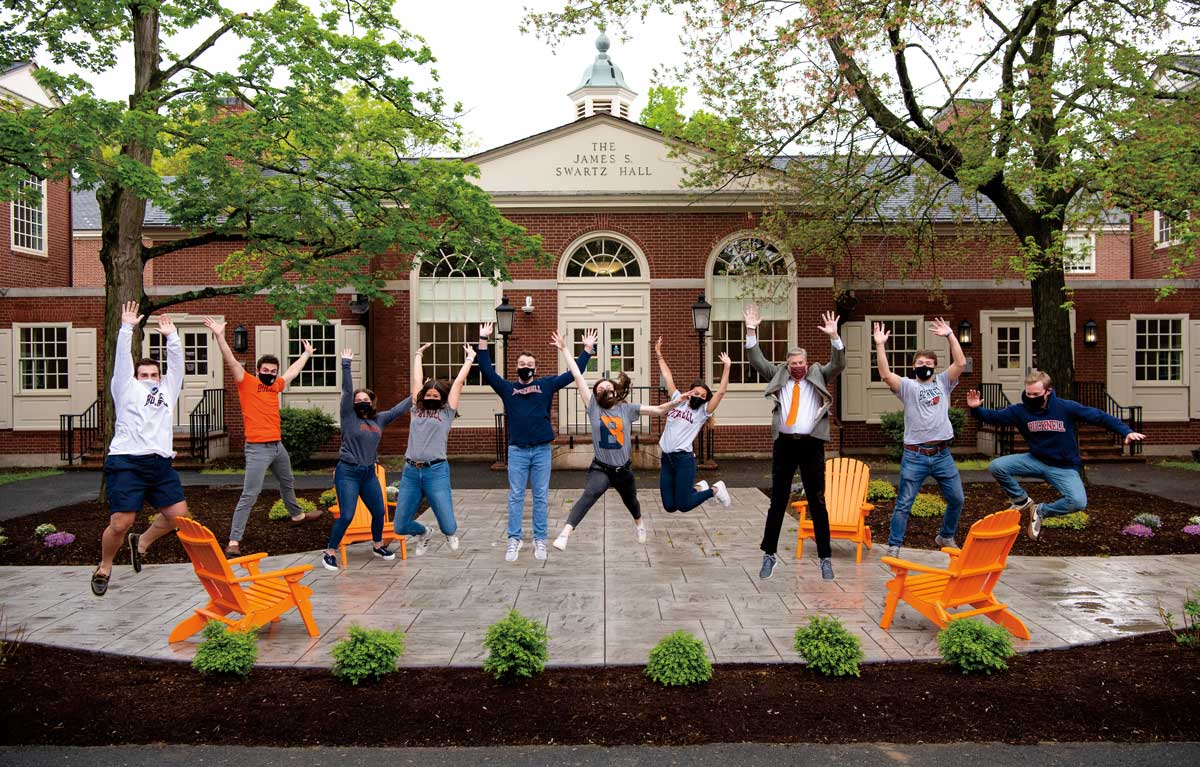
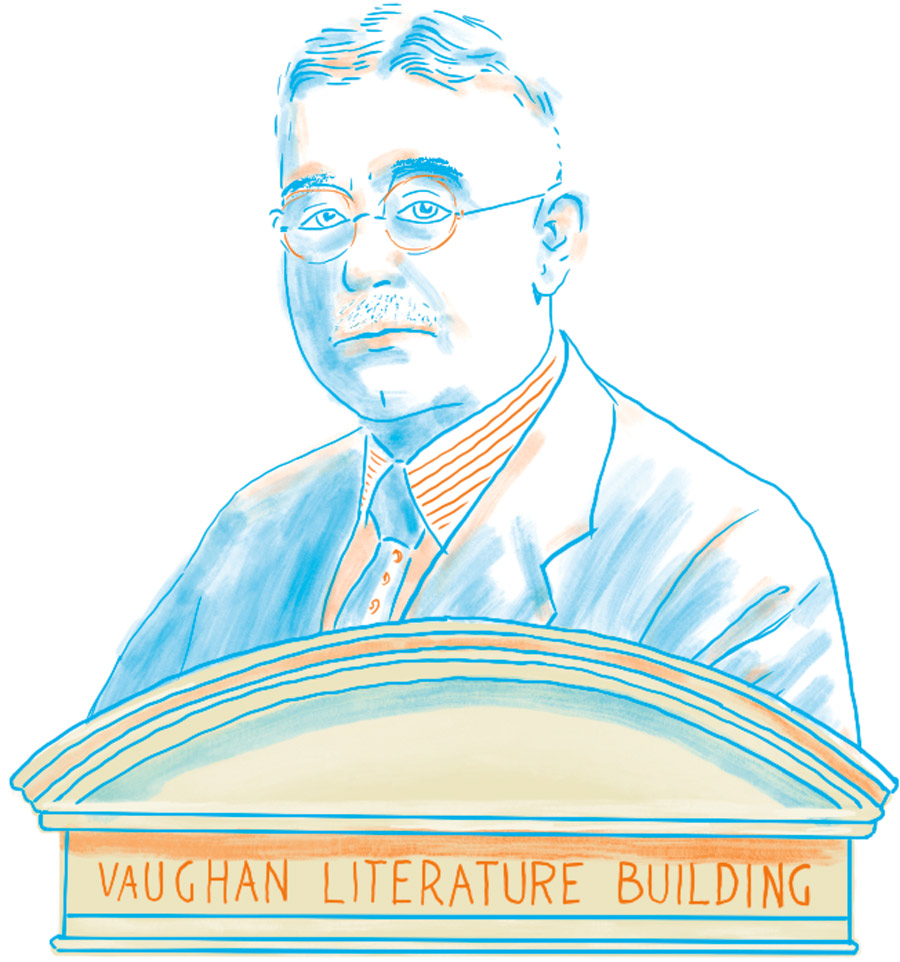

“We who had the privilege of serving with him know now that it was this very modesty which qualified him to become one of the three or four greatest trustees of Bucknell’s long line of splendid trusteeships,” said Arnaud Marts, Bucknell’s then-president. “Dr. Vaughan spoke very seldom in the Board meetings, and when he did speak it was in a low voice and very briefly. But every word, quiet though it was, was heard and heeded.”
During his tenure as a trustee, Vaughan was chairman of the Bucknell Stadium Commission that oversaw the construction of Memorial Stadium — the Bison football, lacrosse, and track and field stadium that later became known as Christy Mathewson–Memorial Stadium.
Born in Portland, Maine, in 1867, Vaughan was a successful Philadelphia businessman who manufactured leather-working machines. At the time of his death, he was one of Bucknell’s most generous benefactors. His philanthropy included a major gift to help reconstruct Old Main (now known as Roberts Hall) after a devastating fire in 1932.
Vaughan died in 1936, and the Charles P. Vaughan Literature Building opened in 1938, dedicated to the man whom a plaque inside Vaughan Lit describes as “creative in business, loyal in citizenship, generous in disposition, unsullied in reputation” and “an abiding inspiration to youth.”